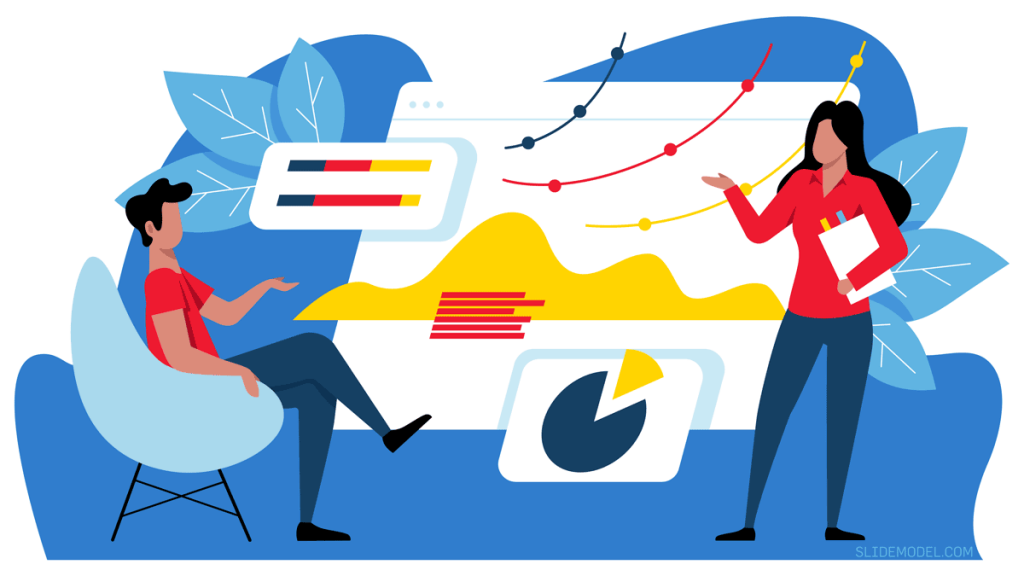
Since the dawn of time, sellers and buyers have engaged in a negotiation process before any values changed hands. On the surface level, every sales transaction looks unique. But a seasoned sales professional will tell you otherwise: there are many repetitive sales process steps, contributing to success. In this post, we are going to break down the main component of the sales process and what happens at each stage.
What is a Sales Process?
The sales process is a series of strategic steps your company takes to convert a prospect into a buyer.
In the early 1900s, William Patterson was the first to develop a series of sales scripts, featuring best practices for selling products to customers, based on his observations of other sellers. Later on, other scientists and sales practitioners identified four more approaches to personal selling:
- Stimulus-response
- Mental states
- Need satisfaction
- Problem-solving
In the late 1970s, Mack Hanan has popularized another selling concept— consultative selling. Today, all of these tactics, and a combination of them, are still actively used for leading the prospects all the way through the sales cycle.
A sales cycle, also known as the sales funnel, features a series of identifiable stages — ToFU, MoFu, and BoFU — each prospect goes through on their buying journey. The sales process, essentially, denotes how the seller will move the prospects from one stage to the other.
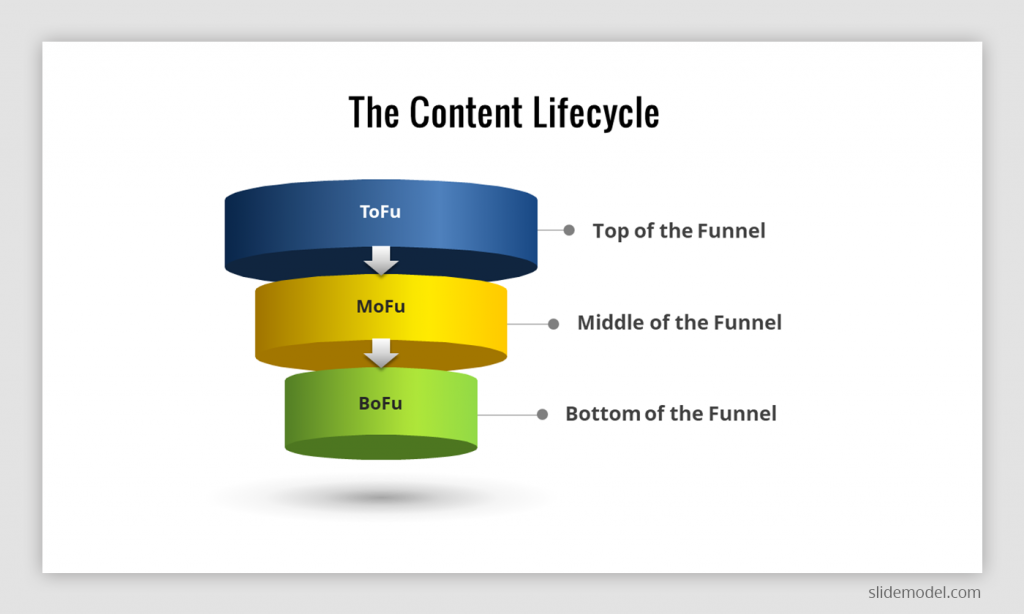
Why Sales Process Mapping is Important?
Understanding how prospects travel through your sales funnel and what sways their purchase decisions at every lag is important for increasing the deal closure rate. Especially, given the complexity of modern consumer purchase journeys, spanning over different mediums and channels.
Most consumers today get stuck in the “messy middle” — a state where they constantly research, compare, consider, and analyze different offerings on the market.
As the Google team puts it:
“The ‘messy middle’, a space of abundant information and unlimited choice that shoppers have learned to manage using a range of cognitive shortcuts. Consumers explore their options and expand their knowledge and consideration sets, then – either sequentially or simultaneously – they evaluate the options and narrow down their choices.”
The goal of your sales funnel and supporting sales process management activities is to get the prospects out of that spiral and direct them towards your offer. But you can’t show them the right way if your sales process is equally messy and is not aligned with the common customer journeys.
7-Steps of the Sales Process Explained (with Examples)
There’s no such thing as a do-it-all sales management process, suitable for every occasion. However, there are certain steps that have been proven over and over again to increase the chances of making a sale.
In the B2C sector, the sales process can be short (spanning over several minutes) and effective. While there are certain repetitive steps, they are not as distinct as in the B2B sales process — the focal point of our post.
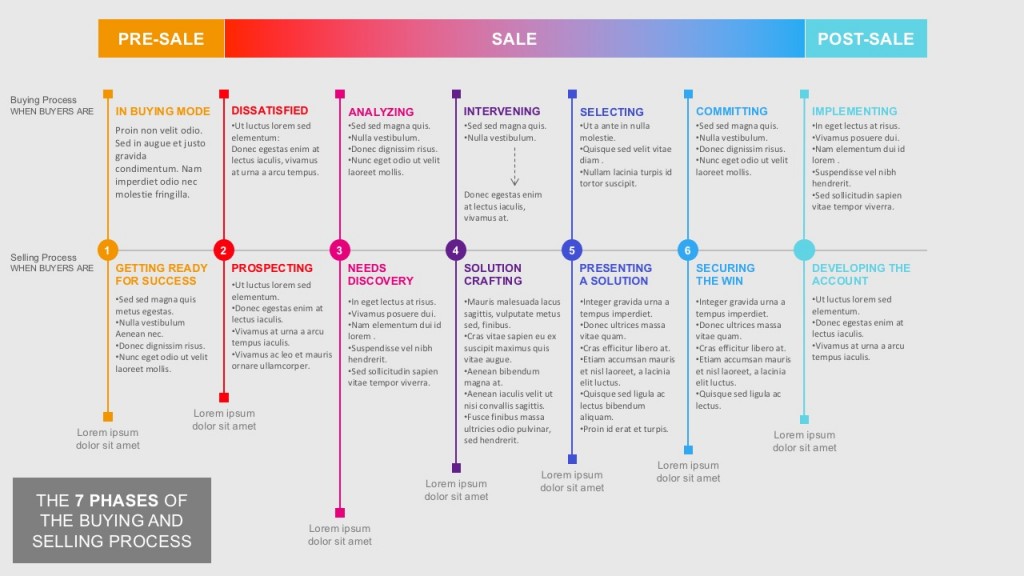
The 7 main steps of the sales process include:
- Prospecting
- Lead scoring
- Preparation
- Presentation
- Addressing the objections
- Closing
- Follow-up/nurturing
In the following section, we explore each of the sales process steps.
1. Prospecting
The first step you’ll see at every sales process flowchart is prospecting — a stage where you attempt to identify the most likely buyers within the total addressable market.
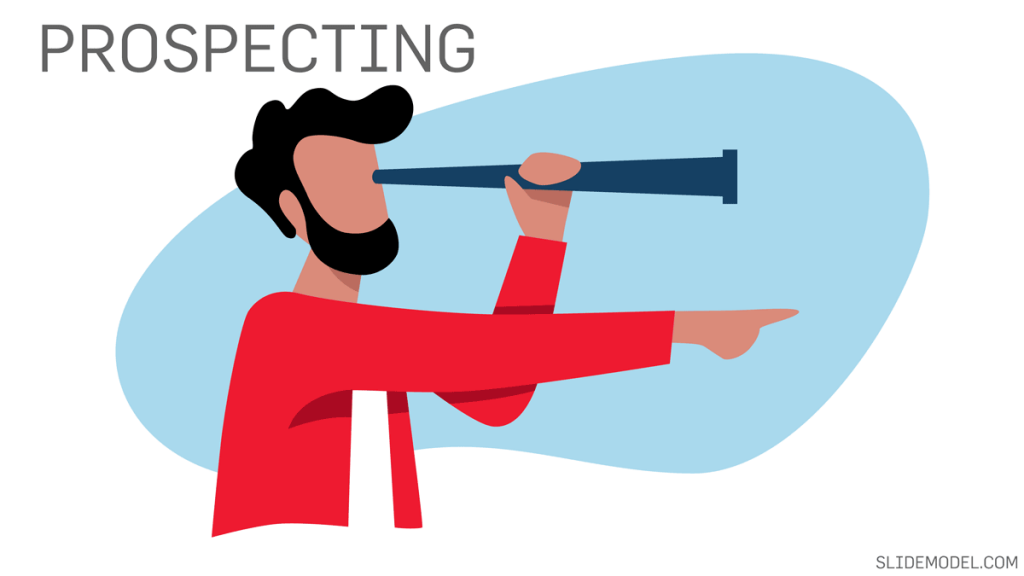
Typically, prospecting starts internally with the analysis of your contact list and CRM records, collected via lead generation and marketing. Or you task your salesforce to venture into the playing field and research possible prospects for your company in-person or online.
The two common types of prospecting are:
- Online research — LinkedIn, professional communities, business directories, etc.
- In-person or virtual networking — attending trade shows, workshops, conferences, professional events, etc.
Essentially, your main goal at the prospecting stage is to identify people who are most likely to buy from you — prospects that fit your ideal buyer persona profile.
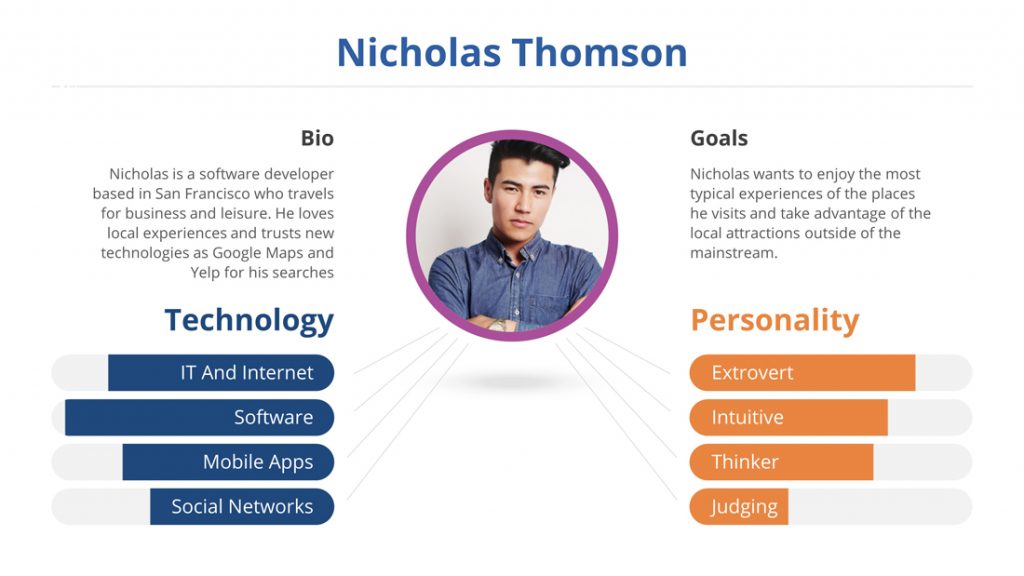
Who is Responsible for This Stage
Normally, prospecting is assigned to sales development representatives (SDRs). Or a similar junior sales position who is responsible for lead research, cold calling, customer outreach, etc. Often such people work closely with marketing teams, responsible for lead generation.
Common responsibilities of sales development representative:
- Customer/client research
- Building prospects list
- Updating and maintaining customer databases
- Cold calling and emailing
- Warm outreaches for prospects, based on outbound marketing data
- Educating prospects
Bigger companies often have a separate role of Business Development Representatives (BDRs) who have the task of generating leads or cultivate leads on their own via networking and outbound communications. Whereas, SDRs focus on prospects that are already in the funnel, plus cold outreach. Though this is not always the case.
2. Lead scoring
Apart from sales, your company likely has a marketing funnel — your methodology for obtaining leads via inbound marketing activities such as social media campaigns, content marketing, SEO, paid advertising, etc. An effective combo of offline and digital marketing strategies can generate a steady influx of new leads. But, understandably, not every lead will end up buying from you.
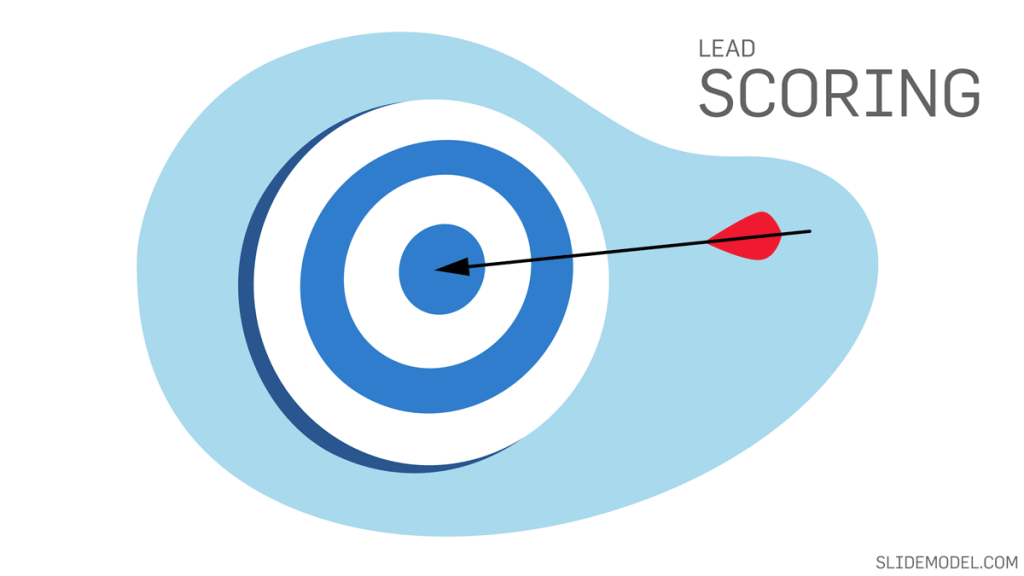
The goal of a lead scoring step is to conduct a careful analysis of all existing prospects to determine the most approachable targets. Lead scoring can be done both manually or using the software. In both cases, lead qualifiers rely on the known customer data and exhibited behaviors to score leads based on their likelihood to buy.
Who is Responsible for This Stage
Lead scoring is a common task for junior account executives, SDRs, and/or dedicated lead qualifiers (less frequently).
To improve the sales process lead qualifiers, parse through the contact list/lead database and assign a score typically — between 1 and 10 — to each prospect. Then they pass the highest-ranking prospects to Account Executives or Senior Sales People who’ll handle the subsequent stages of the sales process. Also, lead qualifiers can send over less attractive leads to sales development or business development reps for further nurturing.
Today, a lot of companies use data science and predictive analytics algorithms to analyze, qualify, and organize leads. Such tools can save tremendous amounts of time and generate highly accurate results.
3. Preparation
Your outreach efforts yielded the results — you have a warm lead at the bottom of your funnel. They are strongly considering you. Now you need to tilt the scale and make a sale.
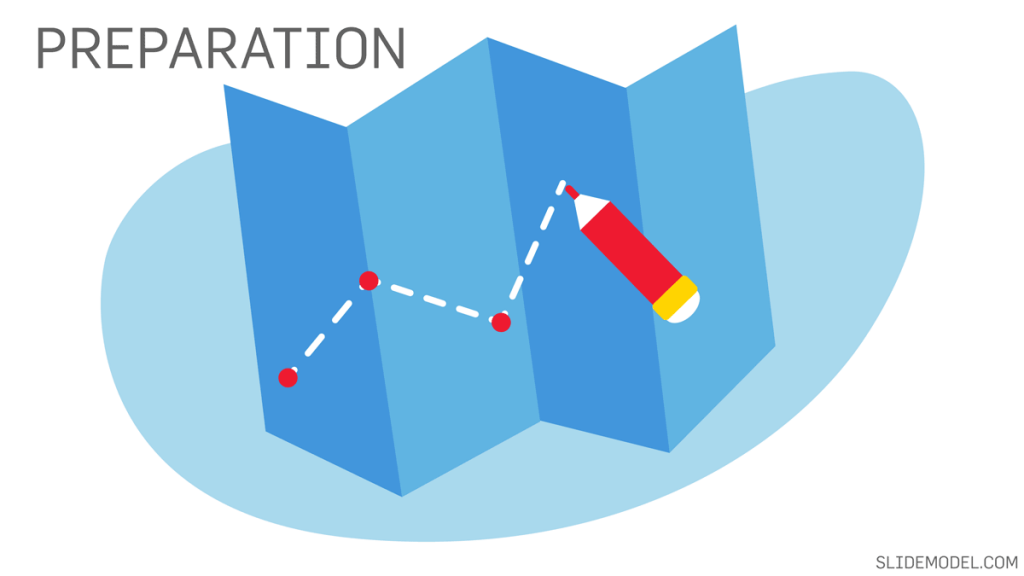
This requires some serious preparation work:
- Background prospect research
- Request for proposal (RFP) document analysis
- Sales presentation preparation
- Sales demo preparation
During this stage, you must learn about the prospect’s needs and challenges. Then position your product as the ideal solution. Building a simple sales process map for the next stages could help.
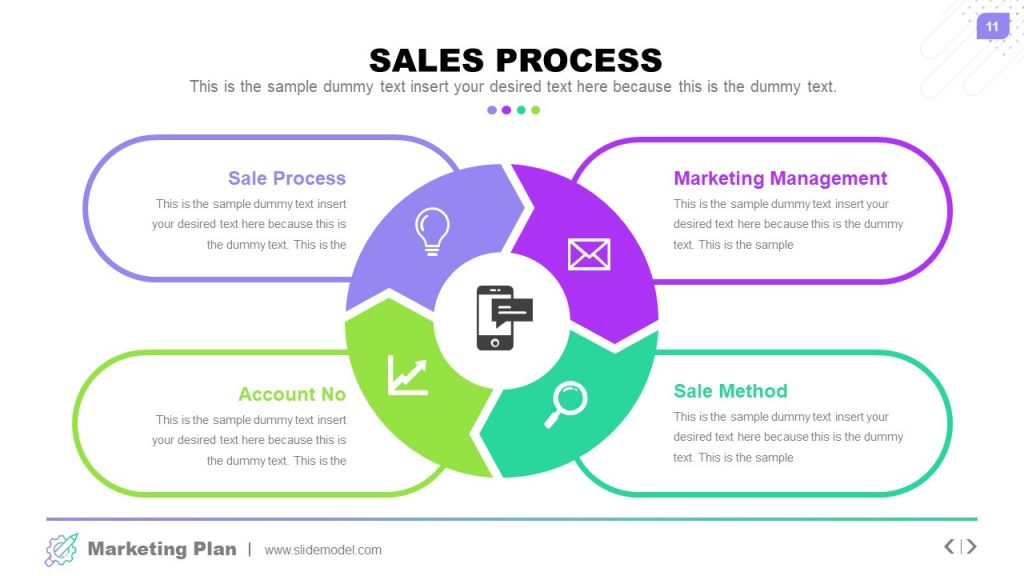
Who is Responsible for This Stage
Primarily sales specialists, sales consultants, and subject matter experts (depending on the niche). Your goal is to engage people who are are experts both in:
- Your company’s service/product portfolio
- The prospects industry/line of business

Essentially, you need a team of people who will help the lead Account Executive responsible for the customer’s sales presentation/demo, thoroughly prepare. Jointly, such a unit should work on:
- Deep analysis of the customer
- Sales offer right-sizing
- Unique sales proposition (USP) development
4. Presentation
Prospect presentation is often the make-or-break stage — this is the moment when you need to make your strongest case and do the hard sales pitch. At this stage, you need both persuasive, tactical, and sometimes even persistent.
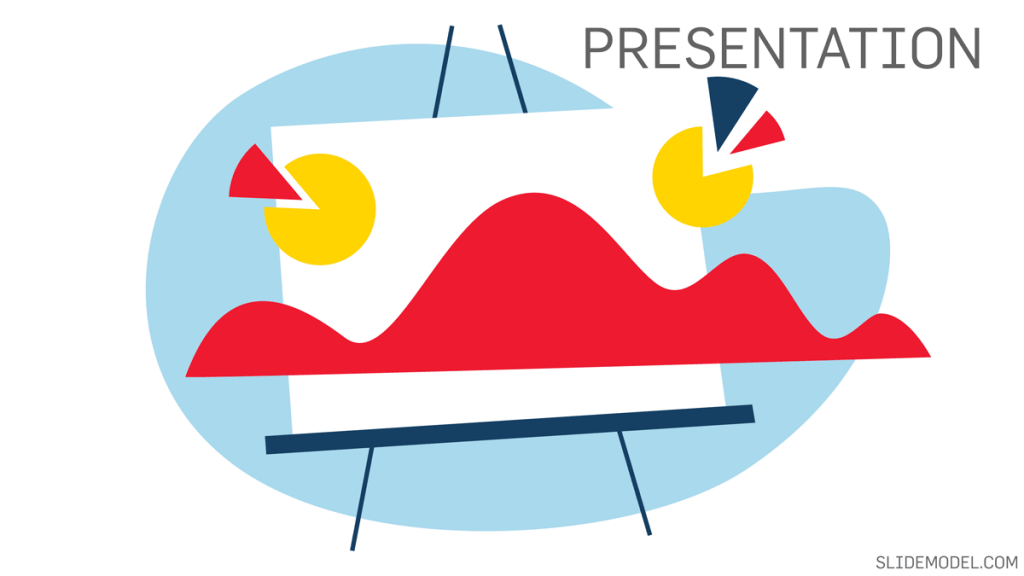
Soundly, there are hundreds of effective selling techniques used by pros. Some of the best ones include:
- SPIN acronym for Situation, Problem, Implication, and Need-Payoff. In this case, you let the buyer do the talking and ask them leading questions to better understand their SPIN. Then you align your sales pitch accordingly. If you need to explain the SPIN model and provide examples, we recommend using one of our editable SPIN Sales Process PowerPoint Template.
- The Sandler Sales method is a soft-sell method, based on physiology. In this case, the sellers position themselves as reliable sources of information. They try to learn about the client’s challenges, aspirations, and issues via a heart-to-heart discussion, only causally mentioning how their product/service can be of any help.
- Consultative selling is similar to the above, but the difference is that a salesperson acts as an expert consultant, asking the prospect about their needs and preferences. Effectively, you help the client diagnose their main issue. Then pitch several possible solutions that could solve it. The goal of consultative selling is to form a long-term bond by putting the customer first.
Who is Responsible for This Stage
Account executives and senior salespeople are usually assigned to deliver sales presentations or demos. Then handle the subsequent discussions, consults, and negotiations.
Oftentimes sales presentations are a team effort, where there’s one main public speaker and several supporting people for answering extra questions.
5. Addressing the objections
Understandably, many clients won’t budget on the first attempt. They have their own share of doubts and objections.
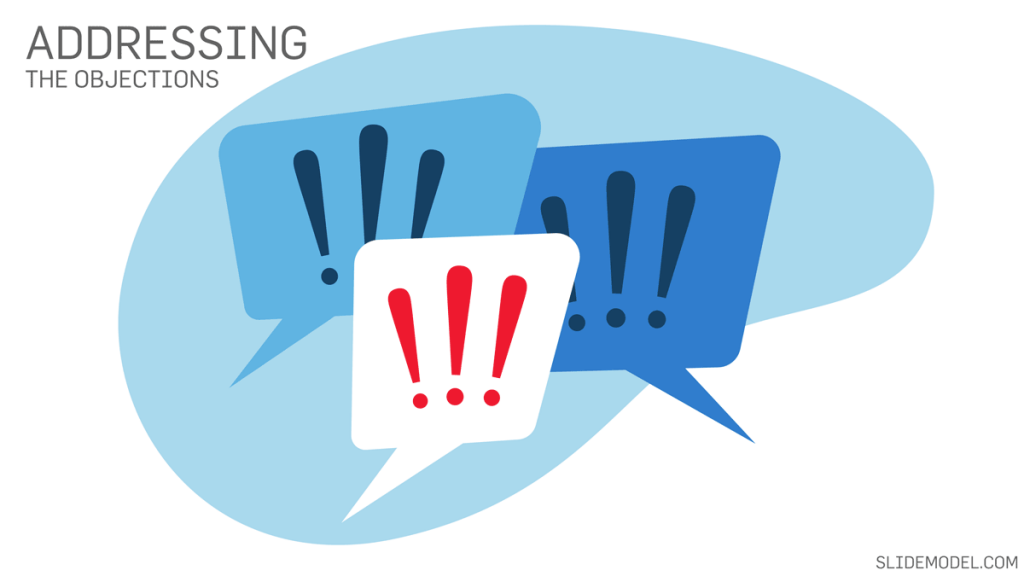
Well-trained salespeople know how to spot those objections early on and effectively tone them down. This is the art of sales negotiations.
Who is Responsible for This Stage
Your best sales negotiators and “closers” — salespeople with the strongest persuasion abilities who can effectively convince clients without steering any tensions.
6. Closing
Sales closure is the step leading up to the shake-hands situation when the prospect caves in and agrees to buy from you.
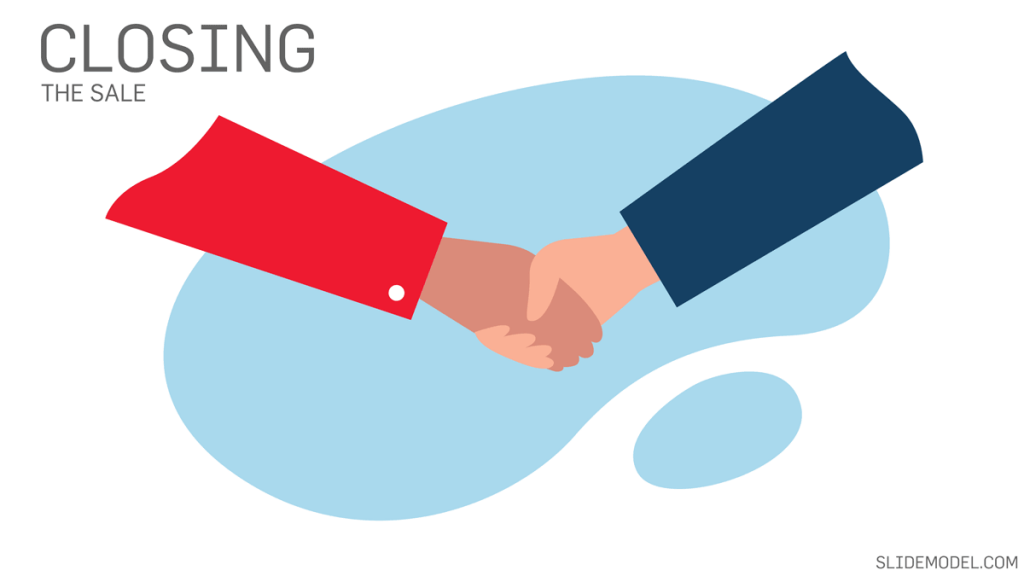
In most cases, the closure stage assumes:
- Sharing a project proposal or agreement
- Providing a price quote
- Securing a buy-in
- And sometimes even contract signage
If the latter is the case, it’s important to discuss and re-state the terms of the deal such as the next steps, delivery scheduled, payment terms, and other issues that may concern the client.
Who is Responsible for This Stage
Typically, the main account executive, assigned to the customer, does the closure. Also, it’s good to have a legal team on standby to prepare the paperwork if you expect a positive outcome.
7. Follow-up / Nurturing
The final step may or may not happen, depending on how the closing went.
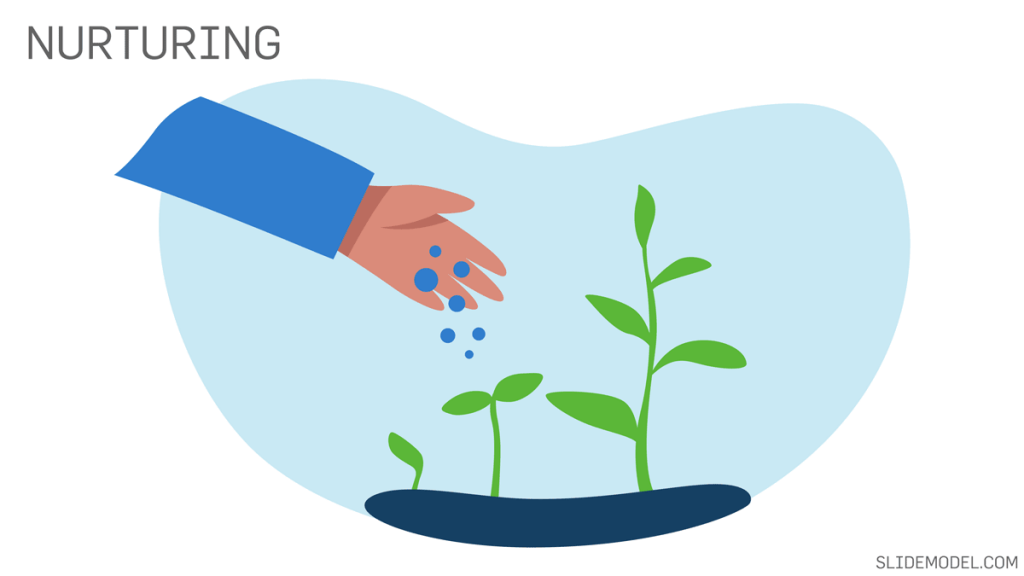
If the prospect proceeded to become the customer, your job is almost done. You just need to close several more steps in your sales cycle such as:
- Customer onboarding
- Activation
- Ongoing help, support, and upsells
Jointly, these efforts are known as “Customer Success Management”. The following example helps to illustrate the idea that 70% or 80% of the revenue comes after the initial sale, yielded by the renewal & upsell revenue.

Who is Responsible for This Stage
Customer success representatives — the workforce who’s responsible for ensuring the customer gets the most value out of your product/service and remains satisfied with their purchase. CS specialists can also handle minor issue resolution or pass on the requests to customer support teams.
In some companies, Account Executives stay with the client to ensure customer success, keep nurturing the relationship, offer complementary products/services, upgrades, or cross-sells.
To Conclude
The primary goal of a sales process is to structure all the activities your teams perform at different stages of the customer journey. While the exact team composition and step names differ from one company to another, the overall premises remain the same — success in sales requires both artistic abilities (persuasion, creativity, persistence) and science (templates, checkpoints, and good data).


